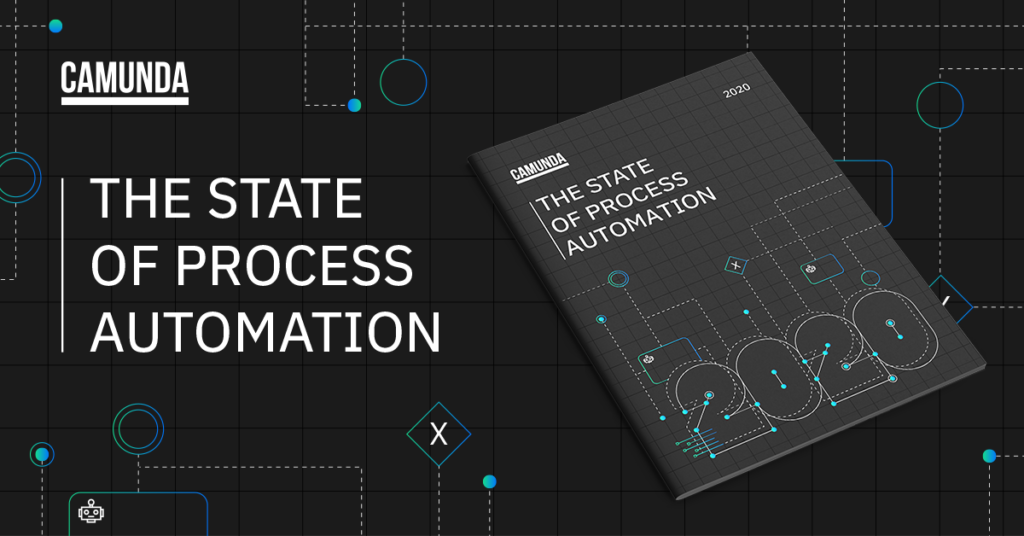Digital transformation is not a “nice-to-have.” Today, it’s essential to business survival, and you’ll find organizations around the world scrambling to make the vision of the digital enterprise a reality. Many are moving to modern architectures, incorporating the cloud, microservices and mobile applications while also fixing short-term bottlenecks using RPA or automating human tasks as remote work becomes widespread.
As a result, process automation has emerged as a linchpin for digital transformation, powering innovation across a company. Process automation is equally sought after to improve an organization’s top line as well as its bottom line – helping to improve customer service, lower costs and drive business growth.
With process automation playing an outsized role in powering innovation, Camunda commissioned a survey of 400 IT decision makers in North America and Europe to benchmark enterprise adoption and determine the biggest trends, challenges and opportunities for improvement: The State of Process Automation.
The results demonstrate the transformative business value that process automation delivers for a majority of organizations, enabling them to deliver new levels of service and expand business opportunities. But the survey also spotlights the stark challenges enterprises are facing as they pursue automation. Their process automation needs are increasingly challenged by a wide range of new technologies, infrastructures and use cases. This new reality raises the danger of incomplete or broken business processes, lack of insight into inefficiencies and bottlenecks, added cost and potentially loss of customers or new growth opportunities.
Complexity is Rising
While process automation has been often thought of as the organization and automation of human tasks, today’s reality looks very different: Process automation is increasingly complex and includes many different steps and components across different technologies. The survey revealed that on average, a single process includes five different types of components. These touch every part of a company’s organization and IT infrastructure including enterprise applications, mobile devices, microservices or RPA bots.
In addition to the wide variety of endpoints, the heavy lifting of process automation is today done anywhere – most often in the private cloud (58%), followed by public cloud, some hybrid scenario and on premise.
Despite (or possibly because of?) rising complexity, many organizations are still relying on manual or inconsistent reporting to decide how to optimize or improve already automated processes, and to identify patterns and bottlenecks. In fact, 25% of respondents still use manual ad-hoc reporting. This lack of visibility and strategic oversight increases the chances that critical business processes could break unnoticed, damaging revenues and reputations.
Investment is Increasing
The digital transformation imperative is being accelerated by macro-economic forces of competition and changing working conditions. In fact, 84% of respondents plan to increase investment in process automation.
Partly this is due to the rise of the remote work and rapid changes in how business gets done, further underscoring requirements for process automation. The COVID 19 pandemic has resulted in 91% more collaboration between IT teams and business stakeholders to solve challenges. With fewer people now working in the office, respondents reported 80% more automation is happening.
Sharing Knowledge is Key
With organizations investing heavily in the roll-out of process automation, Centers of Excellence (CoE) — providing leadership, best practices, support and training for process automation across an organization — are proving key in successful process automation projects.
Three quarters of respondents reported that they either already have a CoE in place or are actively working on one. Meanwhile, CoEs grew from 20% a year ago, to 46% today, with an additional 31% being actively planned.
The State of Process Automation
This blog only scratches the surface of The State of Process Automation, which dives into further topics including RPA, process automation use cases and the future of automation. Download the full research report for free and share with interested colleagues via LinkedIn or Twitter.

